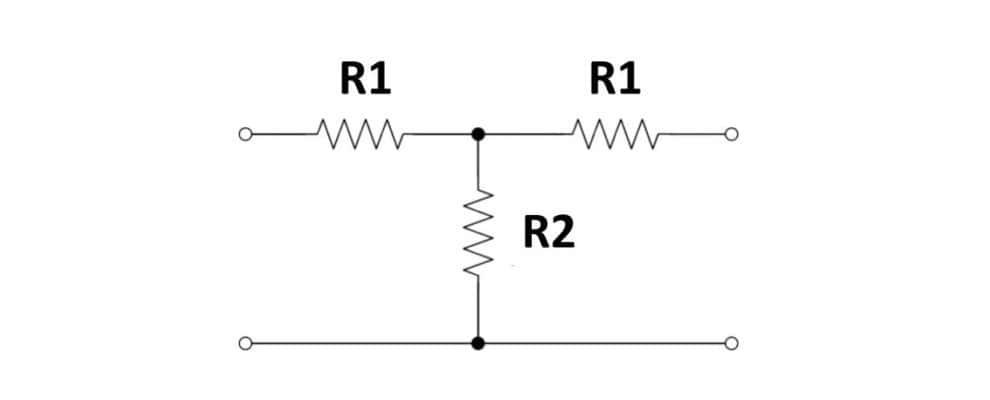In radio frequency (RF) engineering, coaxial loss is a persistent challenge that impacts signal quality. Fortunately, the T attenuator calculator offers a practical solution. This tool helps engineers design T attenuators to manage signal levels and reduce the effects of coaxial loss. By inputting key parameters, professionals can optimize RF systems efficiently. This article explores the problem of coaxial loss, analyzes its causes, and explains how a T attenuator calculator provides a reliable fix for B-end users in industries like telecommunications and broadcasting.
The Problem: Understanding Coaxial Loss
Coaxial loss refers to the reduction in signal strength as it travels through a coaxial cable. This loss stems from conductor resistance, dielectric inefficiencies, and radiation effects. Measured in decibels (dB) per unit length, it increases with frequency—higher frequencies suffer more significant attenuation. For RF systems, such as antennas or radar setups, excessive coaxial loss can weaken signals, leading to poor performance or data errors. B-end users need a way to address this to maintain system reliability.
Analyzing the Issue: What is a T Attenuator?
A T attenuator is a passive device shaped like a “T” with three resistors. It reduces signal amplitude without altering the waveform, making it ideal for RF applications. The T configuration ensures symmetrical attenuation and supports impedance matching, typically at 50 or 75 ohms. Unlike other attenuators, such as pi types, T attenuators are simpler to integrate into certain circuits, offering flexibility. Understanding its role is key to tackling coaxial loss effectively.
The Role of T Attenuators in Managing Coaxial Loss
Though T attenuators add controlled attenuation, they help manage coaxial loss strategically. For instance, when a signal is too strong, a T attenuator prevents receiver overload while maintaining impedance. In long cable runs, where loss accumulates, it adjusts signal levels to an optimal range. The challenge lies in calculating the right resistor values manually—a task prone to errors. This is where tools like the T network attenuator calculator become invaluable.
Solving the Problem: Introducing the T Attenuator Calculator
A T attenuator calculator simplifies designing these devices. By entering values like desired attenuation (in dB) and system impedance, it computes the exact resistor values needed. This eliminates guesswork and saves time. Whether you use an RF attenuator calculator for general purposes or a specialized RF T attenuator calculator, the result is a tailored T attenuator that cuts coaxial loss effectively, ensuring signal integrity.
How to Use a T Attenuator Calculator
Here’s a simple guide to using a T attenuator calculator:
- Enter Impedance: Input your system’s impedance (e.g., 50Ω).
- Set Attenuation: Specify the required dB reduction.
- Add Frequency (if needed): Some tools adjust for frequency-dependent loss.
- Calculate: Get resistor values instantly.
- Apply Results: Use the output (e.g., R1 = 35Ω, R2 = 70Ω) in your design.
This process, supported by a T type attenuator calculator, ensures precision for RF professionals.
Benefits of Using a T Attenuator Calculator
The T attenuator calculator offers clear advantages:
- Precision: Delivers accurate resistor values.
- Speed: Cuts design time significantly.
- Simplicity: Easy for all skill levels.
- Flexibility: Works across RF applications.
These benefits make it a go-to tool for managing coaxial loss in complex systems.
Practical Applications
The T attenuator calculator shines in scenarios like:
- Adjusting signal strength in broadcasting.
- Matching impedances in test equipment.
- Compensating for cable loss in telecom networks.
For example, an engineer using an online T attenuator calculator can quickly design a solution for a 100-meter cable run, ensuring consistent performance.
Choosing the Right T Attenuator Calculator
Selecting the best tool matters. Look for:
- Reliability: Trusted by industry experts.
- Features: Frequency adjustments or power handling options.
- Ease: Intuitive design for quick use.
A coaxial attenuator calculator with these traits ensures your RF designs succeed.
Conclusion
Coaxial loss doesn’t have to compromise your RF systems. The T attenuator calculator provides a fast, accurate way to design T attenuators that address this issue. From impedance matching to signal adjustment, this tool meets B-end needs with ease. By leveraging a T attenuator calculator, engineers can enhance system performance, turning potential inquiries into actionable solutions.

 Coaxial Cable Assembly
Coaxial Cable Assembly Microwave Test Cable
Microwave Test Cable Coaxial RF Connector
Coaxial RF Connector Coaxial RF Adapter
Coaxial RF Adapter Coaxial RF Termination
Coaxial RF Termination Coaxial RF Test Probe
Coaxial RF Test Probe Coaxial RF Attenuator
Coaxial RF Attenuator RF Switch
RF Switch Coaxial RF Power Dividers
Coaxial RF Power Dividers